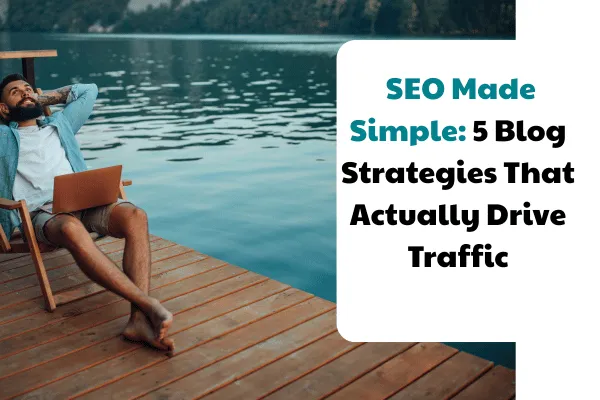
SEO Made Simple: 5 Blog Strategies That Actually Drive Traffic
If you’ve been told that SEO is confusing, technical, and only for experts—you’re not alone. But here’s the truth: SEO for small business owners doesn't have to be overwhelming. With the right strategy, your blog can become a powerful tool to attract organic traffic, boost visibility, and generate qualified leads without spending a penny on ads.
As a digital business coach, I regularly help clients apply these five tried-and-tested blog strategies to climb up the Google rankings—without any jargon or fluff.
1. Use Questions as Blog Titles
Search engines are smart, but users still type in their problems as questions. Think about it—when someone needs help, they ask Google.
Instead of titling a post “Marketing Tips for Coaches”, reframe it as:
“How Can Coaches Market Their Business Without Burning Out?”
This taps directly into what your ideal customer is likely to search.
Keywords to include:
SEO for small businesses
blogging tips
content marketing strategy
2. Add Internal and External Links
One of the simplest ways to boost your website SEO is by linking within your content. For every new blog you write, include links to:
Related blog posts you’ve written
Your services, contact, or freebie pages
Reputable external sites for stats or context
Google sees this as a sign your content is valuable and well-connected.
3. Optimise Meta Titles and Descriptions
This is one of the most overlooked but crucial steps. The meta title and meta description are what show up in search results. Make sure you:
Use a clear keyword in both
Keep your title under 60 characters
Write a description that encourages clicks (around 150–160 characters)
Tools like Yoast SEO or RankMath (on WordPress) make this easy to manage.
4. Write for Humans, Not Just Algorithms
Google’s algorithms favour quality content that actually helps people. Avoid keyword stuffing and aim for clarity and value. A well-written, easy-to-read post that answers a real question is far more effective than trying to game the system.
Use subheadings, bullet points, and short paragraphs to improve readability—especially on mobile devices.
5. Be Consistent
You don’t need to post every week, but you do need to show consistency. Aim for one quality blog post per month to keep your site active and signal relevance to Google.
Over time, your blog becomes an evergreen traffic machine—especially when posts are optimised for long-tail keywords that your audience is actively searching for.
Final Thoughts: SEO is About Service
At its heart, SEO blogging is about helping your audience solve a problem. The better you serve them, the better Google will rank you.
Need help with a blogging plan that actually drives traffic to your site? Book a free discovery call and let’s map out your content strategy.
